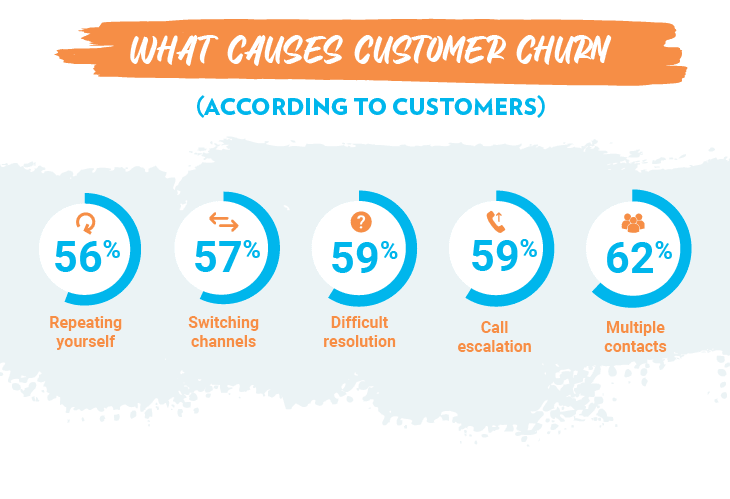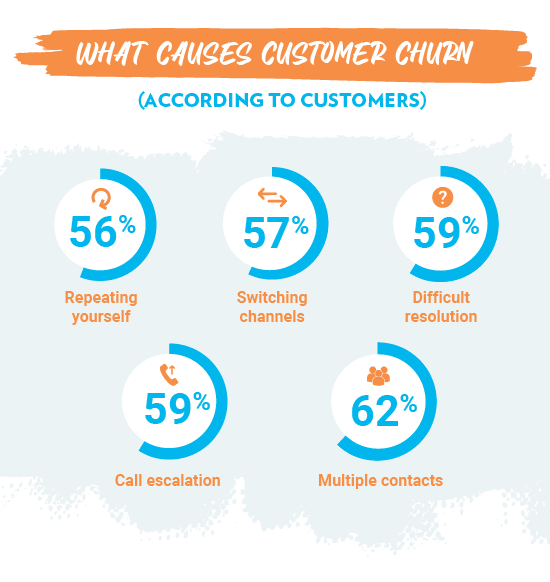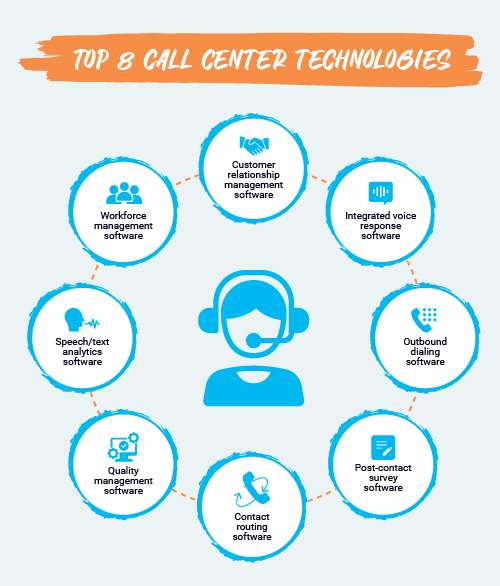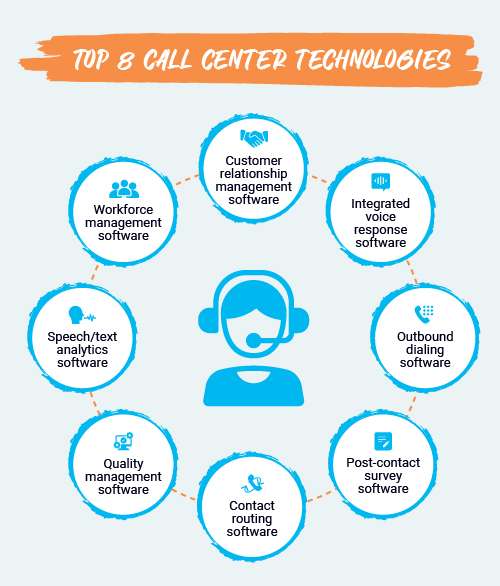-
About Us
Probe CX is a tech-powered, global customer experience organization that amplifies human capabilities with technological excellence.
-
Awards and Accreditations
As an industry-leading CX and digital transformation provider, Probe CX has a resume to match any of our competition.
-
Compliance
Industry-recognized certifications to protect what matters most to our clients and their customers.
-
Locations
Over 19,000 team members delivering exceptional customer experiences across four countries.
-
Vision and Culture
We help our clients become modern digital organizations by combining the latest technology with people, process and data.
-
Executive Team
Meet the team with unmatched experience committed to helping organizations create environments for digitally-enabled CX to thrive.
A leading energy and gas industry retailer required support with credit collection activities and help to optimize their KMS.
- Blog
- Top 6 future trends in contact centers
Top 6 future trends in contact centers

This was not a bad news story though because the report also revealed that replacing human agents with AI chatbots is set to save the contact center industry up to $80 billion in labor costs per year by 2026 and $240 billion by 2031. It predicted that the number of interactions between customers and call centers handled by AI would soar from 2% in 2022 to more than 15% by 2026 before doubling to 30% by 2031.
The study was yet another example of how quickly the contact center landscape is evolving on the back of game-changing technology. Where traditional call centers were considered an expensive necessity, the modern version is a key strategic asset that plays a vital role in helping organizations maintain a competitive advantage in the increasingly important field of customer experience. Studies show that 77% of customers view a business more positively if it is proactive with customer service, hence the rush to embrace contact center technologies that deliver faster and more accurate results.
On that note, here are six contact center trends set to shape customer experiences in coming months.

 Source: Top contact center trends for 2023 and beyond - VCC Live
Source: Top contact center trends for 2023 and beyond - VCC Live
1. Self-service boom
Once viewed by cynics as little more than a cost-cutting exercise, self-service has fast become a customer-driven requirement. The Global State of Customer Experience 2022 report found 52% of customers want access to self-service channels when sourcing products and services2, while another study shows 95% of businesses are witnessing an increase in self-service requests3. The likes of Smart IVRs, online FAQs, automated chatbots and quality knowledge bases are not only providing customers with access to information on their own terms but allowing agents to spend more time on more valuable work. This omnichannel approach is only set to become more prevalent.
2. The rise of AI
The public’s fascination with ChatGPT put a huge spotlight on AI earlier this year but contact center managers are no strangers to the benefits of generative AI technology. From routing calls to the right agent at the right time to chatbots that can provide quick and accurate responses, automation has already changed the face of contact centers and this is just the beginning. A recent report found 79% of companies plan to increase AI and automation investment in the next year, with 52% of CX professionals saying that customer satisfaction will decrease without such technology4.
3. Flexible workforces
The sprawling call center of yesteryear, filled with hundreds of agents toiling side by side, is fast disappearing. The future lies with cloud-based contact centers that allow agents to work remotely and the businesses they represent to pivot and scale support capacity as demand requires. Harvard Business Review research found that during the COVID-19 pandemic, some companies experienced hold-time increases of 34% and escalation rises of 68%5. Enhancing service capabilities via remote and hybrid work will continue to gather momentum and ensure contact centers are prepared to deliver when needed most.
4. Analytical insights
There was a time when contact centers had to solely rely on the knowing eyes of supervisors to get the most out of their agents. That is no longer the case, with sophisticated analytical tools capable of turning data into insightful feedback. The next year will see an uptick in software adoption that measures contact center performance and allows companies to make faster and improved decisions without needing to employ a data analyst. Advanced real-time, historical and overall analytics are paving the way for superior contact centers.


Source: What is a Call Center? Everything You Need to Know (techtarget.com)
5. The XCaaS Revolution
The only constant in contact center technology is change, hence the dawn of Experience Communications as a Service (XCaaS). While Contact Center as a Service (CCaas) has played a key role in replacing legacy cloud technologies, developers are now focused on blending CCaaS and Unified Communications as a Service (UCaaS) into a single solution so operations can manage both internal and external communication within one license. Providers such as Webex, RingCentral and Avaya have started to offer pre-configured XCaaS platforms that allow agents to find customer data under one cloud solution and, in turn, empower them to personalize customer interactions.
6. Security focus
Remote and hybrid work is changing contact centers for the better but one area that cannot be compromised is security. Look for more organizations to rethink how they develop and deploy security policies to cater for a world where more agents ply their trade from virtual private networks (VPNs), private cloud systems and ‘hot desks’. From physical processes such as multi-factor authentication to training courses in security and contact center compliance, it is imperative that businesses showcase that the safety of customer and client data is of utmost importance.
Summary
The contact center industry has always been an evolving beast but an argument can be made that it has never been more dynamic than right now. The speed at which technology is changing the game is incredible and it is essential that businesses adapt to trends to ensure they live up to customer expectations. It should also not be forgotten that agents continue to play a vital role in delivering quality service and providing them with the best tools and solutions will not only enhance their performance but increase staff engagement and retention rates.
Studies have found 62% of organizations are finding it a challenge to recruit high-quality contact center agents. Discover strategies for attracting and retaining skilled talent and how to correctly compensate them whether they are in-office, working remote or in a hybrid capacity.
1 Businesses could save $80bn by using AI in call centres (techmonitor.ai)
2 The Global State of Customer Experience 2022 (cxnetwork.com)
3 Personalize CX with data-driven self-service (cxnetwork.com)
4 The future of AI 2022: Progressing AI maturity in the contact center - Reports | Talkdesk
5 Supporting Customer Service Through the Coronavirus Crisis (hbr.org)
Related Articles
Digital Transformation
Cloud contact centers – what they are and why they work
Learn how the cloud is revolutionizing the contact center environment and making life better for customers, agents and businesses.
Customer Experience CX
How to improve contact center agent performance
Learn practical tips to improve contact center agent performance in the modern-day contact center.
Customer Experience CX
Customer experience (CX) tech: a banking and finance gamechanger
Discover the importance of CX and what digital tools are changing the status quo in the banking and finance industry.
© Copyright 2025 Probe CX | ProbeCX is a proudly owned subsidiary of Probe Group
Privacy Policy | Responsible AI Policy | Financial Hardship Policy | Whistleblower Policy | Complaints Procedure | Supplier Code of Conduct




